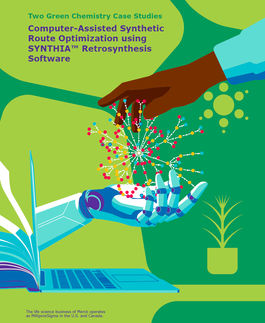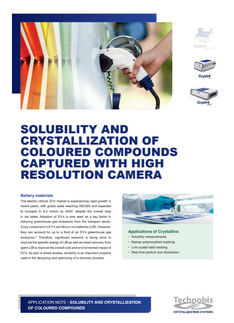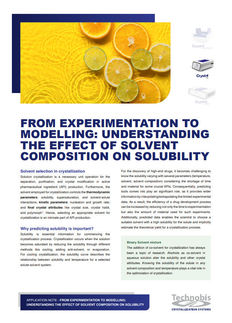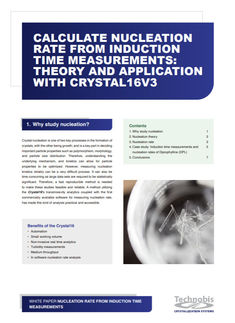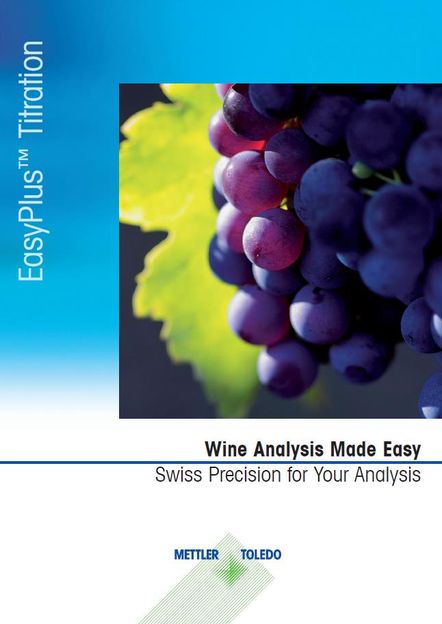Solubility: Importance, Measurements and Applications
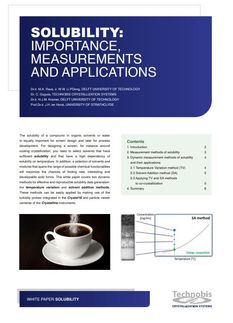
Solubility data for early discovery, crystallization process development and formulation
The solubility of a compound in organic solvents or water is equally important for screen design and later for process development.
For designing a screen, e.g. around cooling crystallization, you need to select solvents that have sufficient solubility and have a high dependency of solubility on temperature. In addition, a selection of solvents/mixtures that spans the range of possible chemical functionalities will maximize the chances of finding new, and developable solid forms.
This white paper covers two dynamic methods for effective and reproducible solubility data generation: the temperature variation and solvent addition methods. These methods can be easily applied by making use of the transmissivity technology integrated in the Crystal16 and particle viewer cameras of the Crystalline instruments. These automated clear-cloud point techniques enable scientists to easily obtain and reproduce their data, without too much effort when compared to EqC method. Next to this, automation of the instrument has led to an enhancement of the efficiency and a reduction of the labor costs for these analysis methods, which encourages the use of solubility data from early discovery to crystallization process development and up to formulation.
Download white paper now
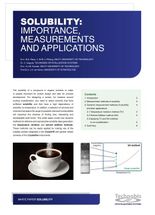
Solubility: Importance, Measurements and Applications
Solubility data for early discovery, crystallization process development and formulation




